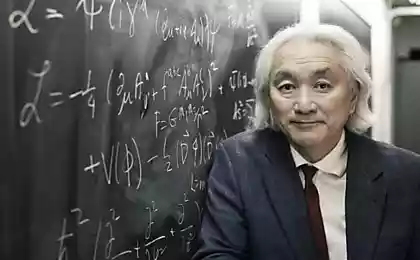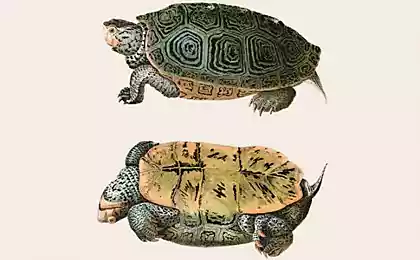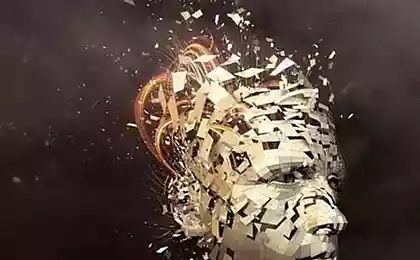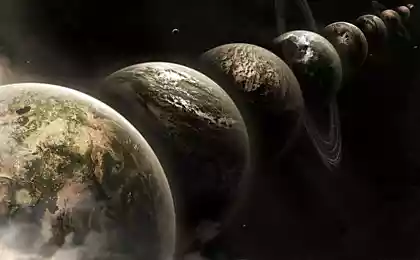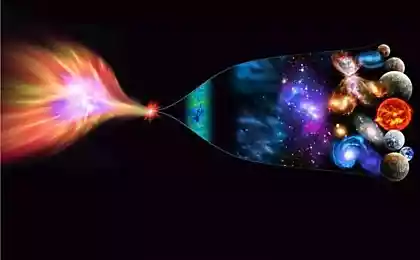718
Universe of the mind Professor Michio Kaku
Possibly, Professor Michio Kaku knows about our future more than anyone else. Photo from the archive of Andrei Vaganova
American scholar of Japanese origin Michio Kaku, Professor of theoretical physics at three universities in the United States, including the Institute for advanced study in Princeton, where about 30 years he worked as albert Einstein, one of the most famous popularizers of physics today in the world. He advises Hollywood to create science fiction movies.
Recently, at the same time in new York, Toronto, London and Sydney, has published his new popular science book "The Future of The Mind" ("the Future of the mind"), where Michio Kaku makes an attempt from the point of view of physics to understand and solve the mystery of the mind and human consciousness. Typical and says a lot even sections of the labor in five hundred pages, "Mind and consciousness", "Mind above matter" and "Altered consciousness".
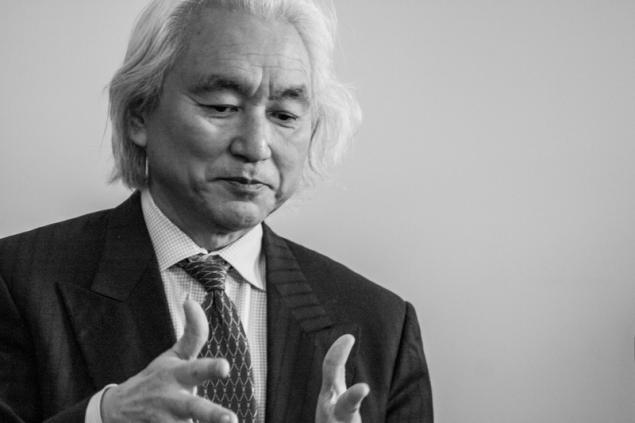
Comparing these concepts of "mind" and "universe", Professor Kaku brings physics and math data, and provides the philosophical explanation of the phenomenon of mind:
"In our Galaxy of 100 billion stars, approximately the same number of neurons in the human brain. To find an object as complex as the one we have is on the shoulders, will have to overcome 40 trillion km to nearest star outside the Solar system. The mind and the universe pose the greatest scientific challenge, but this is not enough: they share a strange relationship. We can say that these concepts are strictly the opposite... But despite this contrast, they have much in common. The universe and mind constantly intersect..."
The full amount of information that can be in human DNA, as well 12х109. The brain with its 100 billion neurons can hold a lot more information. Therefore, the brain exists 2х1011 possible States. But DNA is relatively static, but a state of brain changes every few milliseconds, day and night. Consequently, the amount of information that can hold the human brain far exceeds the amount of information contained in DNA.
"Moreover, our brain – the most comprehensive repository of information in the Solar system and perhaps in our sector of the Galaxy," says Professor Kaku. – The human brain weighs about three pounds, and yet it is the most complex object in the Solar system. Accounting for 2% of body weight, the brain has an incredible appetite and consumes at least 20% of our energy (in newborns, this figure reaches 65 percent); at least 80% of our genes contain information about the brain and for the brain."
Michio Kaku emphasizes two inventions of humanity, which he calls "the revolution-twins": the telescope and the MRI (magnetic resonance imaging). It is particularly emphasized that the penetration into the human consciousness in the twenty-first century comes not because of those disciplines that for centuries have traditionally engaged in consciousness, philosophy, psychology or psychoanalysis. No, first of all, it is physics and neuroscience.
"I gathered that exists in the field of neurology and biology, the description of consciousness and tried to formulate our own definition," the author notes. Here is a definition: "Consciousness is the process of creating models of the world using a variety of feedback on various parameters (e.g., temperature, position in space, time and relation to others) with the aim of achieving a particular goal (for example, find a pair, food, shelter)".
Kaku calls it the definition of "space-time theory of consciousness". Animals create a model of the world in relation to the space, and relatives, while the man goes further and expands their model of the world in time, both forwards and backwards.
The minimum level of consciousness is zero. It occurs when the body is stationary or has limited mobility, and creates a model of their habitat with the use of feedback on a few parameters (for example, temperature or light). This category includes all kinds of plants. Bacteria have a lot more feedback than most plants, so they have a more developed consciousness level 0.
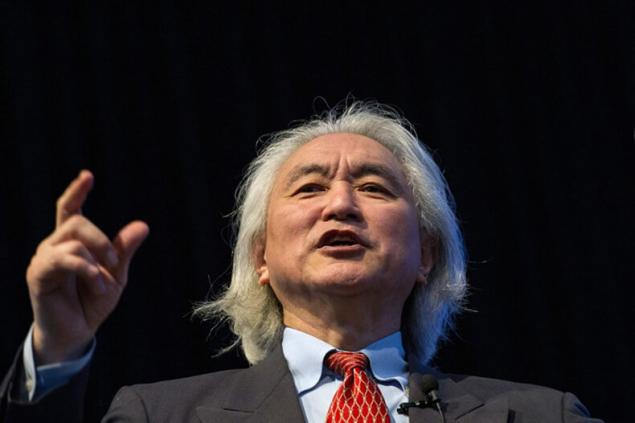
Motile organisms with a Central nervous system conscious level I. Their consciousness includes an additional set of options that allow you to track the current position in space. The reptile brain contains roughly a hundred or more feedback loops (responsible for the sense of smell, balance, touch, hearing, vision, blood pressure, etc., and each of them also contains an internal feedback).
Taken together, these feedback form the mental picture of the world and the position in most reptiles. While Kaku notes the fact that the human consciousness level I controlled for the most part, the reptilian brain, located in the Central and rear part of the head.
A fulllevel of consciousness II occurs in those animals where the body creates a model of its position not only in space but also in relation to relatives (we are talking about social animals with emotions). The number of feedbacks in the minds of the level II increases exponentially: the search for allies, detection of enemies, the Ministry of the alpha male, and so on – all this is a very complex behavioral scheme, the implementation of which required highly developed brain.
The emergence of consciousness level II coincides with the formation of new structures of the brain – the limbic system. This system includes the hypothalamus (responsible for memory), the amygdala (responsible for emotion) and the thalamus (direct touch). Thus, the number and variety of feedbacks greatly increase and change.
Consciousness level III is a simulation of the future. The author refers to a famous saying by Charles Darwin that "the difference between man and the higher animals, though great, is rather in degree than in character."
Man is the only one in the animal Kingdom understands the concept of "tomorrow" and unlike the animals of the future plans ahead for weeks, months or even years (though not always successfully!). Thus, the consciousness of the level III model creates its place in the world, and then runs the simulation into the future, based on more or less a rough guess.
"Human consciousness is a specific form of consciousness that creates a world model and then simulating its behavior in time, evaluating the past and modeling the future based on it. This requires averaging and rating many feedbacks with the purpose of making decisions and achieving goals", emphasizes Michio Kaku.
These levels of consciousness coincide with the approximate stages of evolution in nature: for example, reptiles, mammals and humans. But there are grey areas – animals that have possibly different characteristics of different levels of consciousness; animals in which there is some rudimentary planning, or even single-celled organisms can communicate with each other.
It is not excluded that someday we will be able to share memories with each other. Maybe someday scientists will create the "Internet of the mind" or brain network, through which thoughts and emotions will be sent out around the world. Even dreams can be recorded and then send "mozopacity online.
The rules of life by Robert De Niro
Eugene Grishkovec: you can love only what is impossible to stop
It may be possible our consciousness is downloaded to the computer. You can also play with the concept of immortality. The human body eventually grows old and dies, but not can consciousness live forever? This means that starts the Golden age of neuroscience – these are predictions and dream physicist Michio Kaku.
Here you will involuntarily remember the dictum of the head of one of the American computer corporations Daniel hill: "I love my body no less than any other man, but if with a silicone body that I can live to two hundred years, I agree." published
Author: Yulduz Khaliullin, Khaliullina Gulnara
P. S. And remember, just changing your mind — together we change the world! ©
Source: www.ng.ru/science/2016-06-08/14_kaku.html
American scholar of Japanese origin Michio Kaku, Professor of theoretical physics at three universities in the United States, including the Institute for advanced study in Princeton, where about 30 years he worked as albert Einstein, one of the most famous popularizers of physics today in the world. He advises Hollywood to create science fiction movies.
Recently, at the same time in new York, Toronto, London and Sydney, has published his new popular science book "The Future of The Mind" ("the Future of the mind"), where Michio Kaku makes an attempt from the point of view of physics to understand and solve the mystery of the mind and human consciousness. Typical and says a lot even sections of the labor in five hundred pages, "Mind and consciousness", "Mind above matter" and "Altered consciousness".

Comparing these concepts of "mind" and "universe", Professor Kaku brings physics and math data, and provides the philosophical explanation of the phenomenon of mind:
"In our Galaxy of 100 billion stars, approximately the same number of neurons in the human brain. To find an object as complex as the one we have is on the shoulders, will have to overcome 40 trillion km to nearest star outside the Solar system. The mind and the universe pose the greatest scientific challenge, but this is not enough: they share a strange relationship. We can say that these concepts are strictly the opposite... But despite this contrast, they have much in common. The universe and mind constantly intersect..."
The full amount of information that can be in human DNA, as well 12х109. The brain with its 100 billion neurons can hold a lot more information. Therefore, the brain exists 2х1011 possible States. But DNA is relatively static, but a state of brain changes every few milliseconds, day and night. Consequently, the amount of information that can hold the human brain far exceeds the amount of information contained in DNA.
"Moreover, our brain – the most comprehensive repository of information in the Solar system and perhaps in our sector of the Galaxy," says Professor Kaku. – The human brain weighs about three pounds, and yet it is the most complex object in the Solar system. Accounting for 2% of body weight, the brain has an incredible appetite and consumes at least 20% of our energy (in newborns, this figure reaches 65 percent); at least 80% of our genes contain information about the brain and for the brain."
Michio Kaku emphasizes two inventions of humanity, which he calls "the revolution-twins": the telescope and the MRI (magnetic resonance imaging). It is particularly emphasized that the penetration into the human consciousness in the twenty-first century comes not because of those disciplines that for centuries have traditionally engaged in consciousness, philosophy, psychology or psychoanalysis. No, first of all, it is physics and neuroscience.
"I gathered that exists in the field of neurology and biology, the description of consciousness and tried to formulate our own definition," the author notes. Here is a definition: "Consciousness is the process of creating models of the world using a variety of feedback on various parameters (e.g., temperature, position in space, time and relation to others) with the aim of achieving a particular goal (for example, find a pair, food, shelter)".
Kaku calls it the definition of "space-time theory of consciousness". Animals create a model of the world in relation to the space, and relatives, while the man goes further and expands their model of the world in time, both forwards and backwards.
The minimum level of consciousness is zero. It occurs when the body is stationary or has limited mobility, and creates a model of their habitat with the use of feedback on a few parameters (for example, temperature or light). This category includes all kinds of plants. Bacteria have a lot more feedback than most plants, so they have a more developed consciousness level 0.

Motile organisms with a Central nervous system conscious level I. Their consciousness includes an additional set of options that allow you to track the current position in space. The reptile brain contains roughly a hundred or more feedback loops (responsible for the sense of smell, balance, touch, hearing, vision, blood pressure, etc., and each of them also contains an internal feedback).
Taken together, these feedback form the mental picture of the world and the position in most reptiles. While Kaku notes the fact that the human consciousness level I controlled for the most part, the reptilian brain, located in the Central and rear part of the head.
A fulllevel of consciousness II occurs in those animals where the body creates a model of its position not only in space but also in relation to relatives (we are talking about social animals with emotions). The number of feedbacks in the minds of the level II increases exponentially: the search for allies, detection of enemies, the Ministry of the alpha male, and so on – all this is a very complex behavioral scheme, the implementation of which required highly developed brain.
The emergence of consciousness level II coincides with the formation of new structures of the brain – the limbic system. This system includes the hypothalamus (responsible for memory), the amygdala (responsible for emotion) and the thalamus (direct touch). Thus, the number and variety of feedbacks greatly increase and change.
Consciousness level III is a simulation of the future. The author refers to a famous saying by Charles Darwin that "the difference between man and the higher animals, though great, is rather in degree than in character."
Man is the only one in the animal Kingdom understands the concept of "tomorrow" and unlike the animals of the future plans ahead for weeks, months or even years (though not always successfully!). Thus, the consciousness of the level III model creates its place in the world, and then runs the simulation into the future, based on more or less a rough guess.
"Human consciousness is a specific form of consciousness that creates a world model and then simulating its behavior in time, evaluating the past and modeling the future based on it. This requires averaging and rating many feedbacks with the purpose of making decisions and achieving goals", emphasizes Michio Kaku.
These levels of consciousness coincide with the approximate stages of evolution in nature: for example, reptiles, mammals and humans. But there are grey areas – animals that have possibly different characteristics of different levels of consciousness; animals in which there is some rudimentary planning, or even single-celled organisms can communicate with each other.
It is not excluded that someday we will be able to share memories with each other. Maybe someday scientists will create the "Internet of the mind" or brain network, through which thoughts and emotions will be sent out around the world. Even dreams can be recorded and then send "mozopacity online.
The rules of life by Robert De Niro
Eugene Grishkovec: you can love only what is impossible to stop
It may be possible our consciousness is downloaded to the computer. You can also play with the concept of immortality. The human body eventually grows old and dies, but not can consciousness live forever? This means that starts the Golden age of neuroscience – these are predictions and dream physicist Michio Kaku.
Here you will involuntarily remember the dictum of the head of one of the American computer corporations Daniel hill: "I love my body no less than any other man, but if with a silicone body that I can live to two hundred years, I agree." published
Author: Yulduz Khaliullin, Khaliullina Gulnara
P. S. And remember, just changing your mind — together we change the world! ©
Source: www.ng.ru/science/2016-06-08/14_kaku.html


